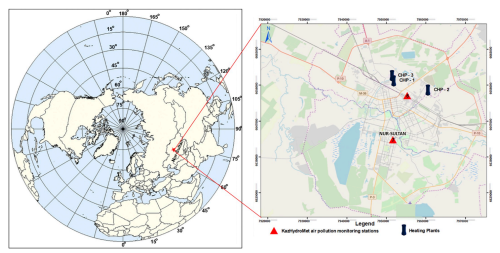大气环流模式对欧亚大陆地理中心区域空气质量影响的分析

主题:Eurasian continent
类型:Atmospheric circulation patterns
作者: Gulden Ormanova Ferhat Karaca Nina Kononova
发布时间:None
类别: 地理
人们对大气环流对区域空气质量的影响越来越感兴趣;然而,在中亚,对它的研究并不充分。本研究首次评估了空气污染事件与基本环流机制(ECM,根据Dzerdzeevskiet等人的分类)之间的循证关系,以及大气阻断过程对欧亚大陆地理中心城市大气的影响。哈萨克斯坦首都努尔苏丹被选为研究地点,因为它位于哈萨克斯坦高地北部的干燥草原地带。首先,提出了一种使用多站和多污染物时间序列数据的事件识别程序。在识别了2017年加热和非加热期间聚集的污染物群落后,通过检查500 hPa和850 hPa位势高度(GPH)图中经向梯度的反转,进一步研究了它们与阻塞反气旋和气旋的关系。在供暖期和非供暖期,分别发现了12次和9次平均持续5天的污染事件。根据连续ECM变化的日历,确定每个事件的ECM类型,然后详细分析与事件对应的具有大气环流和轨迹特征的ECM类型。研究结果表明,i)欧亚大草原上的区域和局部空气污染水平受到区域气象变化的积极控制,ii)北极北部冷空气流在冬季蔓延到该地区和西伯利亚反气旋到达,导致极端的负气温异常,这有助于北极进一步降温,并在该地区形成具有阻断作用的广泛静止反气旋,iii)冷季环流型ECM 13w是最主要的ECM之一,年患病率约为23%,占所有事件的30%,iv)ECM 11a、5a和5b也与更高的污染水平有关(比年平均值增加4倍),但他们的患病率较低(高达5%)。结果表明,具有特定ECM的区域气候条件调节了研究区域大气的通风特征,局部空气污染浓度增加到极端水平并持续更长时间,特别是在稳定的反气旋期间。